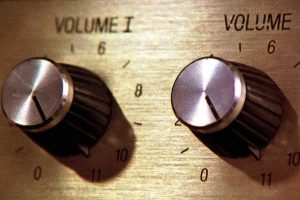For anyone in the filmmaking industry, having an amazing creative portfolio and showreel is important. It’s your visual CV that will show potential clients and people who may hire you exactly what you’re capable of.
So, how do you create something that’s amazing and unique enough to really stand out and get you noticed? Below, we’ve laid out a few best practices and ideas to get you started.
How should it look?
There are a million ways to organise how your portfolio looks. We highly recommend taking the time to do some research. Find out what others in the industry are up to. What have the people you look up to done with theirs? What is it you like and dislike about certain portfolio layouts?

There are a lot of great professional templates out there on a host of different website building platforms. If you would like visitors to be able to purchase your work from portfolio website, services like Arcadina offer business solutions for photographers and videographers to grow your online business with an all-in-one solution. For example, it allows you to create an elegant and professional web portfolio where you can publish your latest work, offer your services, and create private galleries so customers can not only browse but also purchase your photos and videos and print your photos in professional and exclusive formats.
Regardless of the service or template that you end up choosing, as a rule of thumb, a crisp, neat design with two tones of colour usually works best. Unless it matches your personality and you think it benefits you, having a design that’s loud and has a lot going on may distract viewers’ attention away from the videos.


You should present your showreel first and foremost. Make the video big and bold so that you can’t miss it. This is your most important piece on the portfolio (more on that in a second). Below that, or elsewhere on your page or website, look to have three of your four of your best projects available to watch.
It’s useful to provide one or two lines of text with these projects to add some context and help viewers understand what the aims of the projects were and what part you played in them.
Showreel breakdown
Above all else, it’s your showreel that really matters. When you share your portfolio with a client or someone looking to hire you, they’re probably only going to watch this piece. Why? Because the showreel is the one video that can sum up exactly what you do and really sell your skills as a filmmaker. If your showreel isn’t any good, they’re out.
Keep it short
Remember, these people are very busy. A lot of them may well receive 10 portfolios just like yours every single day so they don’t have much time (if any at all) to look through. That’s why ideally, you need to keep your showreel short and concise. No longer than two minutes. Any longer and they will either check out or not click play at all.
Top tip – the people you’re trying to reach often go through these during spare moments during the day. That may include a commute on a train where wi-fi and mobile signal is intermittent at best. All the more reason to keep it short!
Be critical
How do you keep it short? By being critical. There are just two things required to keep your showreel trimmed down. A) Show your very best work only and B) make sure it reflects what you want to work going forward.
To ensure it’s your best work only, be really harsh and critical as you work through your footage. Go through your projects and identify the A* shots. Then, work through these points:
- What are the things you absolutely want to show off?
- What are the shots and projects you’re most proud of?
- Think about what people have reacted best to in the past?
- Put yourself in the shoes of someone looking to hire you and ask yourself, is this good enough?
By putting yourself in someone else’s shoes, you’re aiming to detach from your work emotionally. Just because you like that shot or sequence doesn’t necessarily mean it should be in the final cut. Of course, this can be a tough thing to do so have others look over drafts for you to get it cut down. Constructive criticism and peer feedback is so important.
On top of this, ask yourself:
- Is this relevant?
- Are the shots and pieces of work you’re showing in your showreel a reflection of the type of work you want to be doing going forward?
Now more than ever, it’s proving very useful to have niche showreels that hone in on one specific area of work. For example, if you want to work within the travel industry, are the sequences you shot at a fashion show two months ago relevant? If you’re really keen on becoming known as a great sports videographer, do those drone shots of an expensive property work? Only show the work you’re proud of and really passionate about.
Whatever you decide to hone in on, it still needs to flow cohesively. So once you’ve handpicked and whittled down your best work, try to edit it in a way that still flows and tells short stories within each sequence. Remember, this showreel is showing off not just your best camerawork but also your skills as an editor and storyteller.
Make it yours
Lastly, when it comes to your showreel, show your personality. Make it unique to you. This can be reflected in things like music choice. If you search on YouTube and Vimeo for showreel examples, too often you find that the music is perhaps a bit flat and ‘boring’. Take the time to pick a track that you love (obviously, make sure it fits the flow and energy of your clips). The catchier the better.
Furthermore, the way you edit your showreel and the transitions you use (don’t go overboard) can all be effective in representing your personality. If it works, you may even want to include a little behind the scenes at the end that shows you working or having fun on the shoot. Experiment and see what works!
Sharing other projects
When it comes to further work being shared on your portfolio, you can host as many projects as you’d like. However, three or four of your best pieces probably works best.
Again, make sure they’re your best pieces to date. Keep them updated as you go and, when and where possible, ensure that they accurately reflect the work you want to be doing going forward.
For example, if you’re looking to become known in the automotive space, a project showing off a marketing piece you shot for a travel agency may not be the right fit. On the flip side, it may be such a good piece that it warrants being included because it shows off just how good you are at shooting and editing. You’ll have to weigh up the pros and cons of each.
Wrapping up
So, those are a few of the best practices when it comes to creating an amazing portfolio and showreel. We hope they’ve helped! The key takeaway is all about keeping it short and concise. Cut out the waffle and trim the fat because these people don’t have time for that. They’ll appreciate you saving them valuable minutes and seconds by cutting straight to the point.
Lastly, don’t be afraid to get creative. At the end of the day, making a portfolio and editing a showreel is a creative process so remember to have fun with it and enjoy the process! That will come across in the final version.




